 Endlessly fascinating, Hyouge Mono continues to riff on history, playing a tune that’s largely original but somehow seems more real than what’s written in the history books. In the big picture the wheels of fate continue to turn, drawing us closer to the events we know are coming. But the more intimate world of the aesthetes continues to play a role, subtly influencing those larger events. It’s a remarkable dynamic at play, and once that’s quite unlike any other manga or anime I remember.
Endlessly fascinating, Hyouge Mono continues to riff on history, playing a tune that’s largely original but somehow seems more real than what’s written in the history books. In the big picture the wheels of fate continue to turn, drawing us closer to the events we know are coming. But the more intimate world of the aesthetes continues to play a role, subtly influencing those larger events. It’s a remarkable dynamic at play, and once that’s quite unlike any other manga or anime I remember.
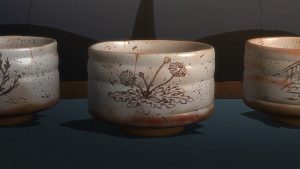 The subjugation of Kanto is a long and complicated process, even as the Houjou have no chance to succeed militarily. Kanto is a huge region, and in those days was something of a wasteland, muddy and treacherous and hopelessly remote. Sasuke plays his role here, far more successfully than Tokugawa Ieyasu’s man Honda-dono would have expected. He negotiates the surrender of the Kita Clan using a tea bowl his maters in Miho have created – one which he’s criticized as “too perfect” to be a desirable sale item and directed to have replacements made by schoolboys. But he changes the terms of the deal to include the clan’s prized stirrups, seeing them as a perfect gift to the ailing and depressed Sen no Rikyu. It’s touch and go for a minute, but Sasuke holds his nerve and wins the day.
The subjugation of Kanto is a long and complicated process, even as the Houjou have no chance to succeed militarily. Kanto is a huge region, and in those days was something of a wasteland, muddy and treacherous and hopelessly remote. Sasuke plays his role here, far more successfully than Tokugawa Ieyasu’s man Honda-dono would have expected. He negotiates the surrender of the Kita Clan using a tea bowl his maters in Miho have created – one which he’s criticized as “too perfect” to be a desirable sale item and directed to have replacements made by schoolboys. But he changes the terms of the deal to include the clan’s prized stirrups, seeing them as a perfect gift to the ailing and depressed Sen no Rikyu. It’s touch and go for a minute, but Sasuke holds his nerve and wins the day.
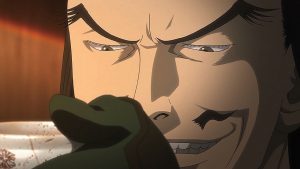 Meanwhile Hideyoshi shows off his one-night castle (sorry, I got my castles mixed up in the last post) to Ieyasu. The two then literally have a pissing contest, where the Chief Advisor – satisfied with his rival’s “water cannon” – reveals his true intentions. He plans to pursue Nobunaga’s dream of conquering Korea and China, and wants Tokugawa to remain behind and keep watch over Japan – and his own young son and heir, left behind in Kyoto. “Don’t betray me like Akechi did.” the Monkey tells Ieyasu, in one of the series’ most significant pieces of dialogue. It’s filled to the brim with irony and hidden meaning in so many ways.
Meanwhile Hideyoshi shows off his one-night castle (sorry, I got my castles mixed up in the last post) to Ieyasu. The two then literally have a pissing contest, where the Chief Advisor – satisfied with his rival’s “water cannon” – reveals his true intentions. He plans to pursue Nobunaga’s dream of conquering Korea and China, and wants Tokugawa to remain behind and keep watch over Japan – and his own young son and heir, left behind in Kyoto. “Don’t betray me like Akechi did.” the Monkey tells Ieyasu, in one of the series’ most significant pieces of dialogue. It’s filled to the brim with irony and hidden meaning in so many ways.
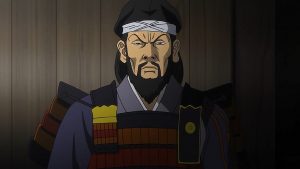 Tokugawa’s fealty to Hideyoshi is a matter that’s never not been in question, really. Hideyoshi needs Ieyasu to be sure, as his ambitions ever-more outstrip his capacity to achieve them. But Tokugawa in truth does plan to betray Hideyoshi, and of course it was Hideyoshi who betrayed Akechi in the first place. Tokugawa plans to build the grandest castle in the world in Edo, present-day Tokyo (which makes a cameo), and make it his capital. That of course is an open act of rebellion against Hideyoshi, which means that when news reaches Chief Advisor all pretense will be stripped away.
Tokugawa’s fealty to Hideyoshi is a matter that’s never not been in question, really. Hideyoshi needs Ieyasu to be sure, as his ambitions ever-more outstrip his capacity to achieve them. But Tokugawa in truth does plan to betray Hideyoshi, and of course it was Hideyoshi who betrayed Akechi in the first place. Tokugawa plans to build the grandest castle in the world in Edo, present-day Tokyo (which makes a cameo), and make it his capital. That of course is an open act of rebellion against Hideyoshi, which means that when news reaches Chief Advisor all pretense will be stripped away.
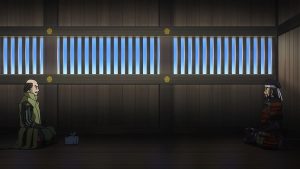 Assisting Tokugawa in this vision is Tenkai, one of the monks from Mt. Hiei who was with Akechi when he died and later went on to found Kita-in in Kawagoe. Tenkai is a fascinating figure, even setting aside the almost-certainly bogus theory that was actually was Akechi himself. He would be Ieyasu’s most important advisor and that of his two Shogunate successors as well, living to the age of 107 – an almost unimaginably long lifespan for the period. Just how much Tenkai knows about what happened to Akechi – and has communicated to Tokugawa – isn’t made clear. But then, that in itself is a fictionalized conceit by Hyouge Mono to begin with.
Assisting Tokugawa in this vision is Tenkai, one of the monks from Mt. Hiei who was with Akechi when he died and later went on to found Kita-in in Kawagoe. Tenkai is a fascinating figure, even setting aside the almost-certainly bogus theory that was actually was Akechi himself. He would be Ieyasu’s most important advisor and that of his two Shogunate successors as well, living to the age of 107 – an almost unimaginably long lifespan for the period. Just how much Tenkai knows about what happened to Akechi – and has communicated to Tokugawa – isn’t made clear. But then, that in itself is a fictionalized conceit by Hyouge Mono to begin with.
 As for Sasuke, he’s slumming with the local rubes in Edo, desperately searching for something interesting to say in the letter he’s penning to accompany the stirrups to Rikyu in Kyoto. The only interesting local scenery being the seven large zelkova trees adjacent the pond, he decides to name the area “Nana-hongi” – though unbeknownst to him the yokels ending up cutting down one of the trees for lumber. Thus the area came to be known as “Roppongi” – and this is almost certainly another fanciful conceit (though a good one).
As for Sasuke, he’s slumming with the local rubes in Edo, desperately searching for something interesting to say in the letter he’s penning to accompany the stirrups to Rikyu in Kyoto. The only interesting local scenery being the seven large zelkova trees adjacent the pond, he decides to name the area “Nana-hongi” – though unbeknownst to him the yokels ending up cutting down one of the trees for lumber. Thus the area came to be known as “Roppongi” – and this is almost certainly another fanciful conceit (though a good one).
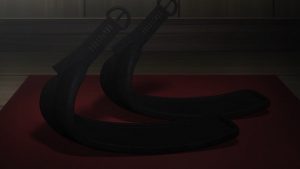 Finally, there’s the matter of Sen no Rikyu, now bedridden and the subject of much concern. Mitsunari remains obsessed with bringing Rikyu down – perhaps in his obsession blinding himself to the man who posed the real threat to his master. Sasuke’s gift and letter arrives, the latter bringing the first smile to the master’s face that the monk attending him has seen in a long time. But there are disturbing signs that Rikyu is no longer the man he was – a towering figure laid low by events, a powerful enemy, and perhaps simply age.
Finally, there’s the matter of Sen no Rikyu, now bedridden and the subject of much concern. Mitsunari remains obsessed with bringing Rikyu down – perhaps in his obsession blinding himself to the man who posed the real threat to his master. Sasuke’s gift and letter arrives, the latter bringing the first smile to the master’s face that the monk attending him has seen in a long time. But there are disturbing signs that Rikyu is no longer the man he was – a towering figure laid low by events, a powerful enemy, and perhaps simply age.


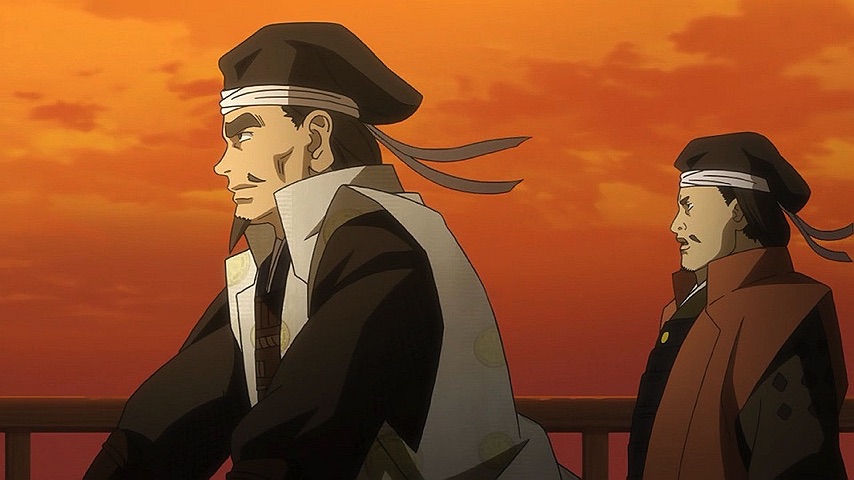


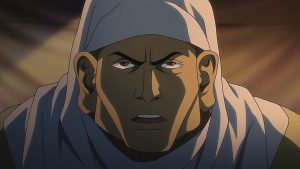
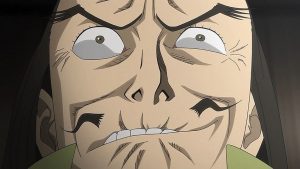


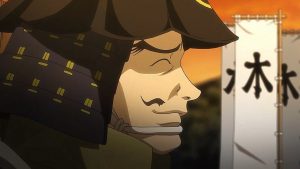
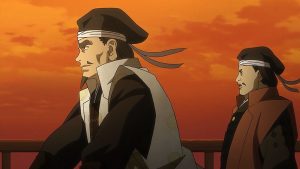
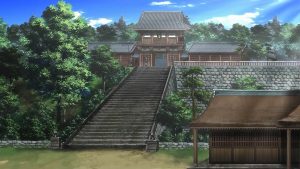
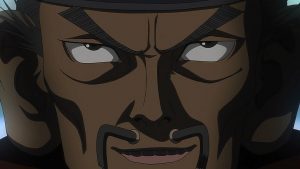
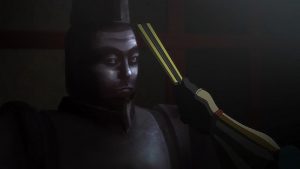
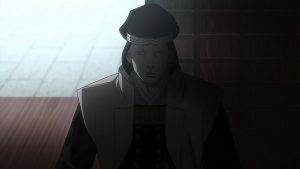
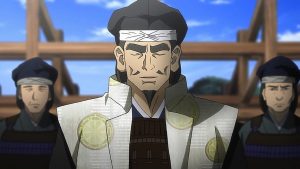


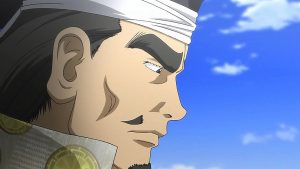
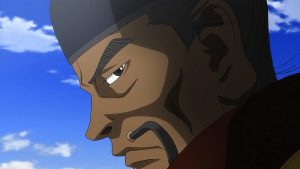
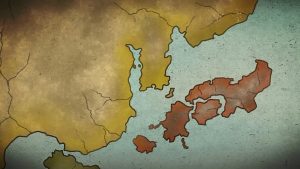
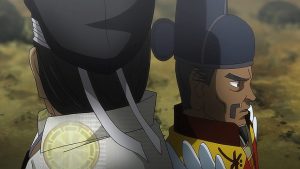
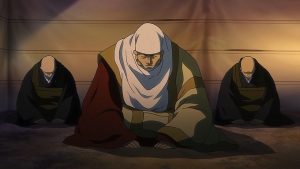

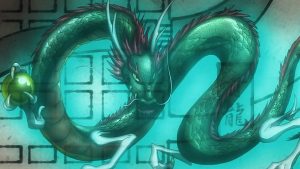
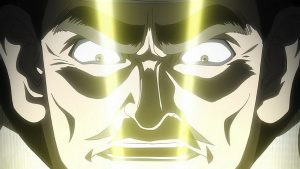
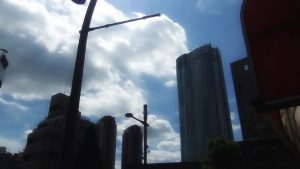
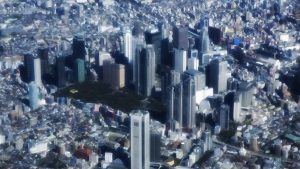

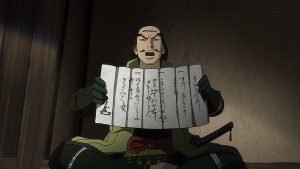
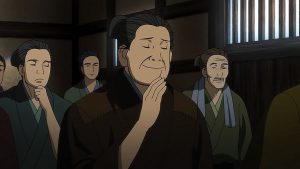
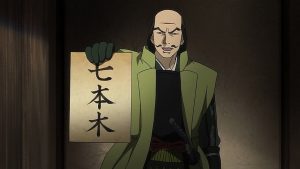
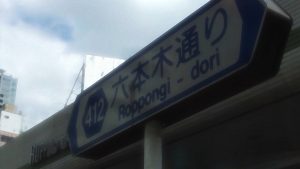

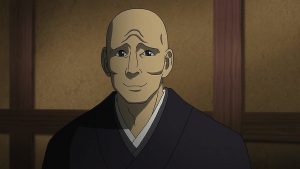
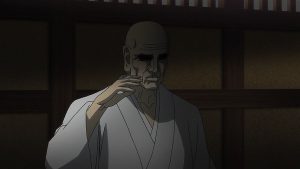
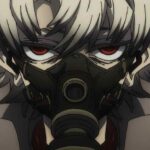
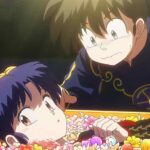
Derrick
November 30, 2020 at 9:06 amthey are all cunning bastards, but there aren’t many choices at that period
Guardian Enzo
November 30, 2020 at 9:28 pmWhat do you mean?
Skidda
December 1, 2020 at 7:58 pmHyouge Mono has a lot of weirdness in it but the modern Tokyo shots are the most bizarre and off-putting moments I remember from this show. It’s probably not intentional but it felt like some kind of Edo glorification in a rondabout way. Might be just me.
Guardian Enzo
December 1, 2020 at 8:05 pmThey were a bit discordant, I agree. But I didn’t take any sort of political commentary from it. I think Yamada (assuming it was also in the manga) was just making a point about what an incredible transformation occurred in Edo, from a swampy wasteland to the undisputed political and financial center of Japan, and how it was Tokugawa’s audacity to believe it was possible that allowed it to happen.